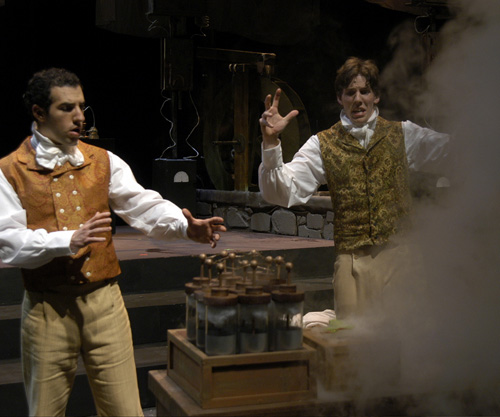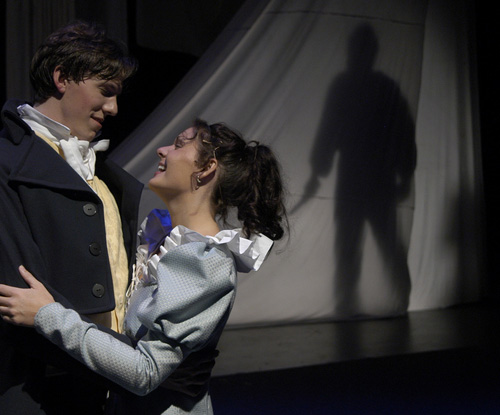At our first rehearsal of Frankenstein, I volunteered myself to be fight choreographer and fight captain. Thankfully, Mr. Julian Wiles said YES! I have always loved stage combat, in every shape and form, ranging from unarmed to rapier sword to basic household objects being used to attack or defend a character. In Frankenstein, the most complex fight scene features the Creature (Michael Lasris), myself as Victor Frankenstein and Henry (Brian Zane). Other combat scenes to note are between Justine (Viveka Chandrasekaran) and Stefan (Sonny Kong). Stefan is constantly pursuing Justine in any way he can, leaving all forms of being a gentleman out of the picture. I wanted to make sure that Justine would show no hesitation to defend herself from the crude and obnoxious Stefan. When choreographing a fight scene I tend to do what most movie directors do: create a storyboard. I visually picture each part of the fight as a frame in film and try to make each moment as exciting as the next. During a typical fight call, which happens 30 minutes or so before the house opens. Actors gather on the stage and we review the fights that contain pushing, strangling, head banging, etc. Any other forms of struggle in the production have been observed and polished, but some don’t require a fight call because the combat cues have been set in stone. Usually we begin each fight at 1/4 speed, which is basically walking through the moves. This normally includes articulating with the body all poses during the actor’s particular fight. These poses operate as visual cues to the actor playing the attacker or the victim.
What I look for mostly in a fight call as the fight captain: (1) Eye contact is always established with the actors and they are comfortable with what they are doing on stage and to each other. (2) Making sure the actors are doing the proper fight choreography I blocked for them. (3) Cues are hit every time at the same time. Finally, clear and projected reactions are made, the victim’s reactions sell everything in stage combat. Once those are set and appear safe to me, we move into half speed/show speed. Most fight choreographers suggest all actors involved with any type of stage combat take any fight at 1/2 speed for the live performance. The reason for them to take the fight at half speed/ show speed and not at full speed is because of the adrenaline that actors have when they’re on stage. There’s an audience, we’re excited and we want to look cool for you. When the fight is taken at half speed the actors are in control and not injuring themselves, therefore, no hospital! After each fight is taken at “show speed” I give the actors friendly reminders about making sure they react more, struggle sounds are heard to keep the fight circulating not only through the audience’s mind, but through the actor’s mind as well, keeping the scene fresh, alive and safe.
Overall, the experience has been an honor. Everyone I worked with was very open to peer direction, which made the fights on stage much easier to create. I had a blast! See you at Memminger!
(From Left to Right: Resident Actor Brian Zane as Henry and Resident Actor Andy McCain as Victor Frankenstein Experiment with Electricity)
(Resident Actor Andy McCain as Victor Frankenstein and Resident Actor Sarah Claire Smith as Elizabeth Embrace While Danger Lurks in the Background)


